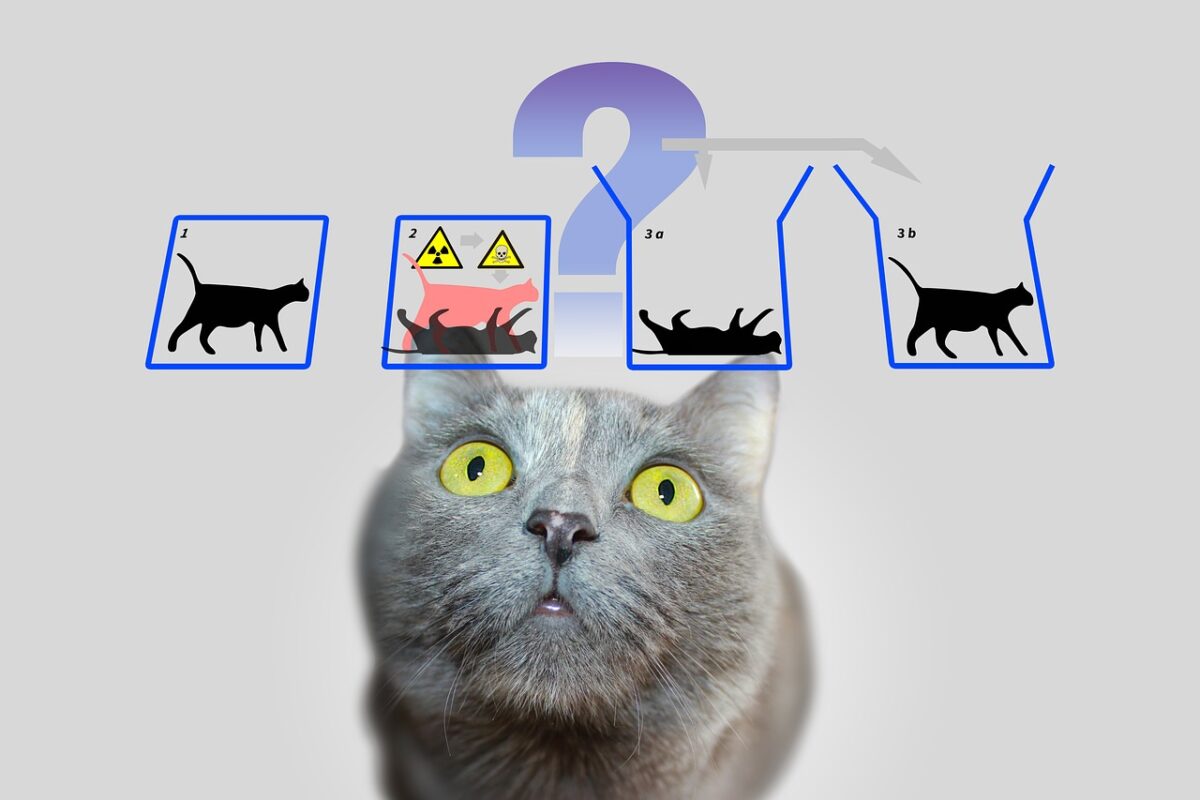`Curiouser and curiouser!’ cried Alice (she was so much surprised, that for the moment she quite forgot how to speak good English)
Lewis Carroll, Alice’s Adventures in Wonderland
I think I can safely say that nobody understands quantum mechanics.
Richard Feynman
FUN FACT : How do you embarrass a physicist? Just ask her casually, “What is your opinion about the Copenhagen interpretation of quantum mechanics?” Then sit back and happily watch her mumble-stumble-mutter-stutter and say something like, “Gosh, is that the time? Have to run!” I am exaggerating of course, but not as much as you would think. Quantum mechanics is weird and physicists are uncomfortable with it. It’s like that one image that won’t resize no matter what.
This has been known in popular culture for some time now and more often than not it has resulted in people reaching all the wrong conclusions. Of course, headlines like “BREAKING : Scientists Don’t Understand How Nature Works!!” don’t help. There are specific problems with quantum mechanics that science has not been able to answer yet. In no way does this mean that science does not work.
The fact that polio has been eradicated from most of the world means vaccines work. That we can land on Moon and Mars with precision means Newtonian mechanics works. And this sentence that you are reading on your screen right now means that quantum mechanics works and works beautifully. Even though we don’t understand how it works, there has not been a single experiment that has proved quantum mechanics wrong.
So what is the problem? It’s to do with interpretation. If you keep your head down and do the calculations – no questions asked – quantum mechanics will give you all the right answers. Alas, scientists rarely do that. They are not satisfied with getting the right answers. They have to know the hows and the whys.
And therein, as the Bard would tell us, lies the rub.
To understand this mystery, first we have to get familiarized with how things work in the quantum world. Let us say we have two kinds of apples – red and green. The colour of the apple is analogous to the spin of an electron. Since the concept of spin is a bit complicated, we can bypass that and work with apples with no significant loss of clarity.
Alice and Bob have two apples, packed in two boxes. These apples will always have opposite colours. They cannot both be red or green. This is because the apples have been prepared in a special way. In case of electrons, we say that they are entangled. Alice opens her box and discovers that the apple is green. Instantaneously, the colour of Bob’s apple will turn red, even if Bob is at the other end of the galaxy. It’s as if one apple has somehow communicated its colour to the other apple without us knowing about it.
You might say, what’s the big deal? Since each apple can be either red or green, the apples already had that colour. This is where the Copenhagen interpretation of quantum mechanics comes in. It says that before we open the box and see, each apple was both red and green. It did not have one definite colour. The moment you check the colour, it becomes red or green. And even more strange is the fact that it forces the other apple to be of opposite colour, regardless of the distance between them.
This aspect of quantum mechanics has troubled many a great minds, including perhaps the greatest mind of them all, Albert Einstein. In 1926, in a letter to physicist Max Born, Einstein wrote, “I am at all events convinced that He does not play dice.” Einstein vehemently opposed the Copenhagen interpretation. Einstein along with Podolsky and Rosen wrote a paper famously known as the EPR paper that discussed the paradoxical nature of the problem.
Erwin Schrödinger, father of quantum mechanics who proposed the fundamental equation called Schrödinger’s equation, read this paper and reframed the problem in a simpler way. This is famous Schrödinger’s cat experiment. You put a poor cat in a box along with a radioactive material that emits radiation. When the radiation is emitted it activates a switch that releases poisonous gas and the cat dies. The amount of matter is so small that in one hour it may emit radiation or it may not. You leave the cat inside for an hour and then ask the question, “Is the cat alive or dead?”
Since radioactive emission is a quantum mechanical phenomenon, we can only give probabilities if the atom has emitted radiation or not. But this means that we also have to carry over these probabilities to the cat’s well being. Simply put, this means that unless you open the box, the cat is both alive and dead.
In an article in The New York Review of Books, Nobel laureate Steven Weinberg states that the Copenhagen interpretation is now widely unacceptable. But the alternatives are not satisfactory either. One is the multiverse theory in which the cat is alive in one universe and dead in another. Stephan Hawking is one of the proponents of this theory.
For a fun introduction to relativity, quantum mechanics and other exotic stuff, one of the classic books is George Gamow’s Mr Tompkins in Paperback.



